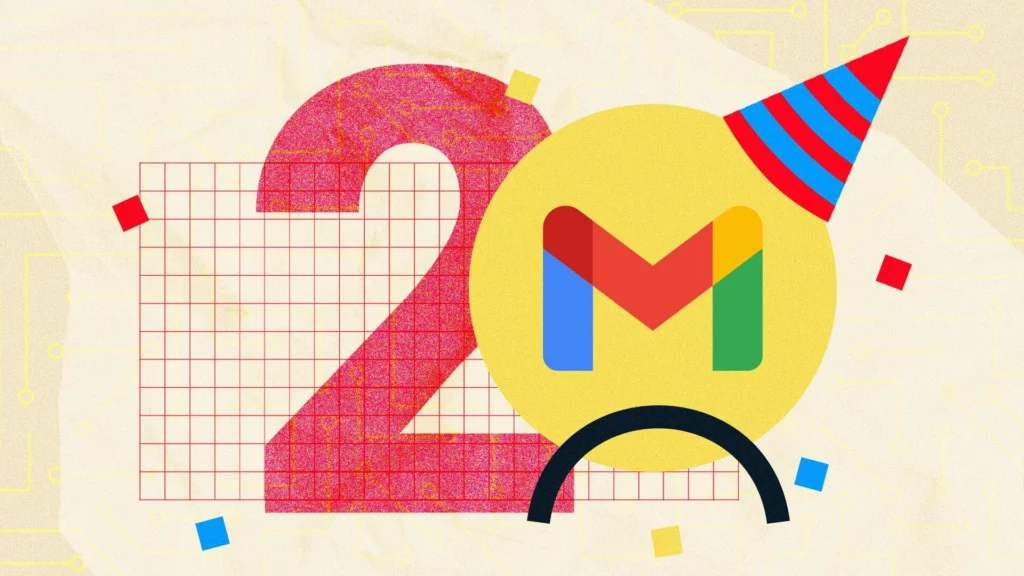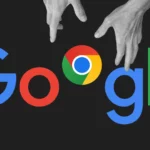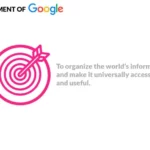Twenty years ago, when Gmail first burst onto the scene, email was already a staple of digital communication. Yet, despite its widespread adoption, email hadn’t seen a groundbreaking overhaul in years. That changed on April 1, 2004, when Google launched Gmail—a service that promised to revolutionize how people communicated online. From its innovative storage capacity to its sleek interface, Gmail quickly redefined what email could be. Today, as Gmail celebrates two decades of existence, it’s worth reflecting on how this once-radical idea reshaped modern communication.
The Birth of Gmail: A Game-Changer in Storage and Organization
When Gmail debuted, it was immediately clear that it wasn’t just another email platform. At a time when most providers offered a measly 2 MB of storage, Gmail came equipped with 1 GB—a staggering amount that felt almost futuristic. For perspective, competitors like Yahoo Mail and Hotmail were struggling to keep pace, leaving users frustrated by frequent account deletions due to overflowing inboxes. Gmail solved this problem elegantly by introducing infinite storage, a concept that seemed almost unthinkable at the time.
But storage alone wasn’t enough to make Gmail stand out. Its interface was equally groundbreaking. Unlike cluttered rivals, Gmail’s layout was clean and intuitive, featuring clear categories like Inbox, Sent Mail, and Trash. Threaded conversations grouped messages into logical threads, eliminating the chaos of endless reply chains. Users could archive emails without deleting them, allowing for easy retrieval later. These features weren’t just convenient—they fundamentally changed how people interacted with their email accounts.

Search as the New Organizing Principle
Another hallmark of Gmail was its powerful search functionality. Before Gmail, organizing emails typically involved meticulous folder hierarchies or manual tagging. Gmail flipped this script by introducing keyword-based searching, similar to Google’s search engine. This meant users no longer needed to painstakingly categorize every message—they simply typed a word or phrase into the search bar and found exactly what they were looking for.
Search became Gmail’s organizing principle, making it easier to manage massive volumes of correspondence. It also paved the way for smarter algorithms that could suggest replies, flag suspicious emails, and even categorize messages automatically. Over time, Gmail refined its search capabilities further, introducing filters, labels, and advanced operators that gave users unprecedented control over their inbox.
The Rise of Productivity Features
As Gmail matured, it introduced features designed to enhance productivity. Labels, for instance, allowed users to tag emails with custom categories, providing flexibility that folders couldn’t match. Filters automated repetitive tasks, such as forwarding emails from specific senders or applying consistent formatting to certain types of correspondence. Smart Reply, launched in 2017, took this concept even further by suggesting pre-written responses based on the content of incoming emails.
These innovations didn’t just save time—they transformed email into something more dynamic. Gmail became a hub for managing not just personal communications but also professional workflows. Team members could collaborate seamlessly via shared inboxes, while freelancers could track client communications effortlessly. Gmail’s integration with Google Docs, Sheets, and Slides further streamlined document management, creating a cohesive ecosystem for productivity.
Security and Privacy: Building Trust
Security and privacy were always central to Gmail’s design philosophy. From the outset, Gmail implemented end-to-end encryption for transmitted data, ensuring that messages remained secure during transit. Two-factor authentication (2FA) added an extra layer of protection, making unauthorized access far less likely. Spam detection algorithms worked tirelessly to filter out unwanted emails, keeping users’ inboxes pristine.
However, Gmail’s approach to privacy drew scrutiny over the years. Critics argued that scanning emails for advertising purposes violated user trust. In response, Google clarified its policies, emphasizing that scanning was limited to improving user experiences and preventing abuse. While the debate persists, Gmail’s commitment to transparency and continuous improvement has helped maintain its reputation as a secure platform.
Mobile Revolution: Gmail Goes Everywhere
The rise of smartphones accelerated Gmail’s evolution. As mobile usage surged, Google ensured that Gmail remained accessible across devices. The mobile app delivered push notifications, offline support, and gesture controls, making email management seamless regardless of location. Gmail’s integration with Android devices also reinforced its status as a core part of the Google ecosystem.
Voice commands and smart replies further enhanced the mobile experience. Users could dictate emails, approve responses, or schedule follow-ups hands-free, maximizing efficiency. Gmail’s adaptability to changing user behaviors ensured that it stayed relevant in an increasingly mobile-first world.
Expanding Beyond Email: Gmail’s Broader Role
Over the years, Gmail transcended its role as a mere email service. It became a gateway to Google’s broader suite of tools, including Calendar, Drive, Meet, and Tasks. These integrations created a unified workflow that simplified task management, event scheduling, and file sharing. Gmail also facilitated payments through Google Pay, expanded into collaborative spaces with Google Chat, and even integrated with third-party applications via APIs.
Today, Gmail serves as more than just a communication tool—it’s a cornerstone of productivity, collaboration, and digital identity. Its influence extends beyond individuals to businesses, where it powers countless workflows and customer interactions. Gmail’s versatility underscores its enduring relevance in a rapidly changing digital landscape.
The Human Touch: Personalization and Customization
One aspect of Gmail that often goes overlooked is its ability to personalize the user experience. From customizable themes and signatures to automated reminders and birthday greetings, Gmail tailors itself to individual preferences. These small touches make Gmail feel less like a utility and more like a companion in your digital life.
Google’s investment in AI-driven personalization has only strengthened this connection. Gmail now anticipates user needs, offering suggestions for follow-ups, summarizing important emails, and even predicting next steps based on past behavior. This level of insight makes Gmail feel almost prescient, enhancing its value as a tool for managing life’s complexities.
The Future of Gmail: Where Does It Go From Here?
As Gmail approaches its 20th anniversary, it faces new challenges and opportunities. The proliferation of alternative messaging platforms like Slack, WhatsApp, and Signal raises questions about Gmail’s long-term relevance. Meanwhile, generative AI promises to redefine email composition, prompting speculation about how Gmail will integrate these technologies.
Despite these uncertainties, Gmail’s strengths remain its adaptability and user-centric design. Google’s commitment to innovation ensures that Gmail will continue evolving, perhaps introducing features like voice-controlled email drafting or immersive virtual collaboration spaces. Whatever the future holds, Gmail’s legacy as a game-changer in communication is secure.
Gmail didn’t just modernize email—it reinvented it. By combining generous storage, intuitive design, and cutting-edge features, Gmail transformed what was once a mundane task into a seamless experience. Its impact extends far beyond individual users, reshaping how businesses operate and how people collaborate globally.
Two decades later, Gmail remains a testament to Google’s ability to rethink established norms and deliver solutions that truly matter. As we celebrate its milestone, we’re reminded that great innovations often begin with seemingly simple ideas. Gmail started as a bold bet on infinite storage, but it grew into something far more profound—a symbol of how technology can enhance our lives. And as we look ahead, one thing is certain: Gmail will continue to evolve, shaping the way we communicate for generations to come.














Add Comment